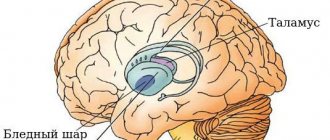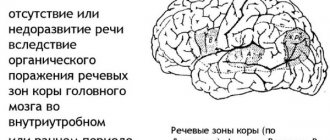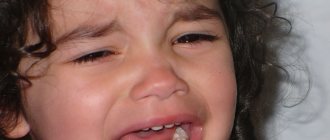Dysarthria is a violation of the pronunciation aspect of speech, which occurs as a result of organic damage to the central nervous system. At the Yusupov Hospital, a multidisciplinary approach is used to restore speech in patients suffering from various types of dysarthria. Neurologists, psychologists, speech therapists, and rehabilitation specialists take part in the rehabilitation process. Each patient is given an individual dysarthria correction program.
The following basic principles of correctional work for dysarthria are distinguished:
- A complex approach;
- Systematicity and regularity;
- Early start of restoration and correction work;
- Development of all components of speech (vocabulary, grammatical structure, coherent utterance);
- Development and formation of all mental activity of the patient;
- Individual approach and formation of motivation for classes.
An important principle of correctional work for dysarthria is the early start of rehabilitation and correction work. This is especially important for dysarthria that developed in patients with stroke, after traumatic brain injury, congenital dysarthria and speech impairment in patients suffering from cerebral palsy. Work to overcome dysarthric disorders is always systematic, long-term, painstaking, and regular. The speech therapy work of specialists at the Yusupov Hospital is aimed not only at correcting pronunciation, but also at the development and formation of the patient’s entire mental activity and the development of all other components of speech (vocabulary, grammatical structure, coherent utterance).
The course of speech therapy work is long, it takes several years. Specialists at the Yusupov Hospital build a whole system of relationships with the patient and his family and use stimulation methods. When working with patients, various game techniques, incentive measures, and stimulation of the volitional components of the psyche are used in an effort to improve speech.
The main directions of correctional work for dysarthria are as follows:
- Development of phonemic attention and perception;
- Formation of speech breathing;
- Overcoming voice disorders;
- Work on the prosodic side of speech (rhythm, tempo, intonation);
- Development and formation of facial and articulatory motor skills;
- Production of sounds;
- Formation and development of general motor skills and fine motor skills of the hands.
In case of identified violations of vocabulary and grammatical structure, the speech therapist works in parallel in these areas.
Correction stages
The first stage of correction of erased dysarthria is preparatory. Work to overcome speech disorders begins with overcoming the layers and secondary phenomena that interfere with correct pronunciation:
- Excessive drooling;
- Muscle passivity;
- Deficiencies in phonemic awareness and perception;
- Preparing muscles for the formation of articulatory patterns.
At the second stage, the speech therapist’s work is aimed at overcoming the main disorder – phonetic speech deficiencies. It lies in the production of sounds. The third stage is the inclusion of the patient in active communication.
Natural exercise of the muscles of the oral region is the act of eating. Training the masticatory muscles using a natural process is given attention from an early age. A patient who has suffered a stroke or traumatic brain injury, suffering from degenerative diseases of the nervous system or cerebral palsy, is taught chewing techniques, especially chewing with the mouth closed, and is taught to alternately chew on the right and left sides of the mouth.
If older children exhibit early reflexes (sucking), work is carried out aimed at inhibiting delayed reflexes. Speech therapists use a mechanical obstacle to prevent unnecessary movement. The speech therapist fixes the muscles of the mouth with his hands, and fixes involuntary movements of the tongue with a spatula or biting the tongue with his teeth. To remove friendly movements, the chin is fixed with the hand of a speech therapist. The reflex of the relationship between the movements of the mouth and hand can be inhibited during articulation gymnastics by fixing the child’s hands with the hand of a speech therapist.
At the same time, they develop the ability to voluntarily control their muscles. The patient is given a goal, encouraged to control movements, uses visual control, and encourages the slightest success. It is difficult to slow down reflexes in the oral area, as this area is vital and sensitive. Not only the muscular system is highly developed in it, but also all types of sensitivity: tactile, taste, temperature.
To overcome drooling, the patient is taught to swallow saliva. For this purpose, massage the masticatory muscles, induce swallowing movements, tilt the head back and offer to swallow saliva. To stimulate chewing movements, you can give the patient a cookie or roll and teach him to chew in front of a mirror, alternating chewing with swallowing.
The patient is taught to voluntarily close his mouth through passive movements of the lower jaw, which are initially performed by a speech therapist. He places his hand under the lower jaw, under the chin, puts the other on the patient’s head and closes the jaws with light pressure. Then the patient is taught to perform this movement independently on command: open your mouth, close your mouth.
The patient is taught techniques of voluntary relaxation - relaxation. The training begins with general relaxation. They are taught to voluntarily relax the muscles of the upper and lower extremities, then the neck and head. Develop the ability to distinguish between tension and relaxation and regulate according to instructions. Exercises are carried out in a playful way.
To relax, stroking, vibration and other relaxing massage techniques are used. Acupressure is used for the same purpose. This work is carried out by massage therapists at the Yusupov Hospital after consultation with a neurologist and rehabilitation specialist.
Corrective work with children with ODD and dysarthria. Article on speech therapy on the topic
Corrective work with children with OHP and dysarthria
The system of speech therapy treatment for dysarthria is complex: correction of sound pronunciation is combined with the formation of sound analysis and synthesis, the development of lexical and grammatical categories and coherent utterances. The principle of an individual approach is used. Positive results of speech therapy work are achieved subject to the following principles:
— step-by-step interconnected formation of all components of speech;
— a systematic approach to the analysis of speech defects;
- regulation of children’s mental activity through the development of the communicative and generalizing functions of speech. In the process of systematic and, in most cases, long-term training, a gradual normalization of the motor skills of the articulatory apparatus is carried out, the development of articulatory movements, the formation of the ability to consciously switch the mobile organs of articulation from one movement to another at a given pace, overcoming monotony and disturbances in the tempo of speech, and the full development of phonemic perception. This prepares the basis for the development and correction of the sound side of speech and creates the prerequisites for mastering the skills of oral and written speech. Speech therapy work must begin in early preschool age, thereby creating conditions for the full development of more complex aspects of speech activity and optimal social adaptation. The combination of speech therapy and therapeutic measures is also of great importance.
Stages of speech therapy work for dysarthria:
1. Preparatory stage. Goal: freeing the child’s speech from secondary and less persistent phenomena that interfere with starting work on speech. This is overcoming violent movements, drooling, hyperactivity, passivity. At the first stage, it is necessary to establish contact with the child and teach him to control his condition during classes.
2. Main stage. Goal: overcoming phonemic inferiority of speech, developing intonation and expressive means, improving the lexical and grammatical aspects of speech.
This period consists of a cycle of speech therapy classes (individual, frontal, subgroup), which are planned taking into account the age of the group, the nature of speech disorders, based on the individual typological characteristics of the children in the group. The result is automation and differentiation of sound pronunciation skills, speech breathing and voice skills, the presence of a certain level of ideas about the surrounding reality, and the presence of detailed, correct speech.
3. Final stage. Goal: introduction of formed speech skills into communicative speech.
What was the result at the second stage is practiced in various types and forms of speech.
L.V. Lopatin and N.V. Serebryakov developed a methodology for speech therapy work in groups of preschool children with an erased form of dysarthria. They propose to carry out corrective work in the following areas:
work at the phonemic level
· development of motor function, involving simultaneous influence on the kinetic and kinesthetic basis of movement, on static and dynamic coordination of movements, the formation of various levels of movements and their gradual complication;
· work on the formation of intonation expressiveness of speech, which is preceded by rhythmic exercises. They create the prerequisites for mastering logical stress and correct division of phrases;
· formation of the perception of oral speech, which begins with syllables of various structures, then children are taught to distinguish between correctly and distortedly pronounced sounds, to isolate a given sound from words, etc.
work at the lexical-grammatical level
· development of vocabulary and word formation. Because In children with an erased form of dysarthria, phoneme differentiation is not formed, this causes difficulties in distinguishing the grammatical forms of words due to the unclearness of the auditory and kinesthetic image of the word and especially the endings. Consequently, the morphological system of the language suffers primarily, the formation of which is closely related to the opposition of endings according to their sound composition. The main attention in this technique is paid to the formation of an orientation towards the semantic structure of the word, the organization of lexical-semantic fields, the development of syntactic connections of the word and the updating of the dictionary;
· development of inflection. The development of inflection is carried out taking into account the ontogenetic sequence of the appearance of word forms in children (differentiation of noun singular and plural, consolidation of the forms V.p., R.p., D.p., T.p. first without prepositional, then constructions with prepositions).
Work on correcting sound pronunciation is carried out individually using various massage techniques and special speech therapy gymnastics. The work uses traditional methods of sound production, focusing on automation and differentiation of phonemes. There are several special techniques for producing sounds for dysarthria. The most common is the method of phonetic localization, when the speech therapist passively gives the child’s tongue and lips the necessary position for a particular sound. Probes, flat tongue plates and a number of other devices are used. The child's attention is drawn to the sensation of positions. He then performs the movements independently, with or without some help from a speech therapist.
When working on sound pronunciation, they rely on knowledge of the articulatory structures of the native language, analysis of the structure of sound pronunciation disorders in each child (kinesthetic analysis) and on specific techniques for producing sounds.
The main methods of work are: motor-kinesthetic and auditory-visual-kinesthetic. In the process of speech therapy work, inter-analyzer connections are established between the movement of articulatory muscles and their sensation, between the perception of a sound by ear, the visual image of the articulatory structure of a given sound and the motor sensation when pronouncing it. For automation, the technique of simultaneous pronunciation of a sound and the image of its symbol is used—writing and speaking. These exercises help to enhance the sound and enrich it with motor action. When working on sound pronunciation, it is important to identify the child’s intact compensatory capabilities (intact sounds, articulatory movements, special sound combinations and words in which defective sounds are pronounced correctly). The work is based on these safe links.
One of the controversial means of correcting dysarthria is massage. It consists not only of a direct mechanical effect on the massaged tissue, but also causes some neuro-reflex and humoral changes in the tissue. In speech therapy work for dysarthria, relaxing and tonic massage techniques are used. Relaxers are aimed at relieving spasticity in muscle groups, toning to activate the neuromuscular system. For a tonic massage, intense and sharp movements are recommended: kneading, patting, tapping, etc. For relaxation - rubbing, stroking, kneading (see Appendix No. 1). Speech therapy sessions begin or end with massage techniques. For different forms of dysarthria, different types of massage are used:
Bulbar—tonic;
Pseudobulbar—relaxing;
Subcortical—usually relaxing;
Cortical—usually tonic;
Cerebellar—tonic.
In correctional work to overcome dysarthria, articulatory gymnastics plays an important role in order to develop the ability to relax spastic muscles, achieve the full amplitude of voluntary movements, hold the active speech organ in a certain position, develop the strength of muscle contractions, inhibit synkinesis, achieve speed and accuracy of movements, and perform complex complexes movements and ease of switching from one to another. Complexes of articulatory gymnastics must be individual, taking into account the nature of dysarthria, the severity of its symptoms, the age of the patient, and the characteristics of his personality. Regardless of these parameters, the set of exercises includes breathing exercises to develop an air stream, and exercises to develop the intonation-expressive side of speech. In childhood forms of dysarthria, when articulation skills have not yet been formed due to motor disorders, their development and automation become the central section of speech therapy work and in certain clinical forms of dysarthria they have their own characteristics.
Bulbar dysarthria.
Goal: improving tissue trophism, improving nerve conduction, increasing muscle excitability, overcoming synkinesis. This is achieved with the help of tonic massage, speech therapy gymnastics using the inclusion of position on the formation of passive-active and active movements. Particular attention should be paid to inhibiting friendly movements. A set of exercises must be composed of techniques that promote the activation of paretic muscles. It is important to remember that with any spread of paresis, the respiratory muscles are trained.
Pseudobulbar dysarthria.
In case of spastic paralysis, the attention of the speech therapist is aimed at increasing the reflex excitability of the muscles and relieving tension in individual muscle groups. A relaxing massage and exercises for active relaxation of the respiratory muscles are recommended. Pay attention to subtle differentiated movements of the tip of the tongue. In severe cases of pseudobulbar dysarthria, individual voluntary movements are developed on the basis of involuntary synergies (coughing, swallowing, sneezing).
Subcortical dysarthria.
The technique can be varied due to the varied clinical manifestations of this form. Typically, relaxing massage techniques are used, sometimes toning. The child must be trained in active muscle relaxation and volitional suppression of hyperkinesis. When correcting this form, significant attention must be paid to the prosodic component of speech: breathing, tempo, rhythm, melody.
Cortical dysarthria.
The main attention should be paid to the formation of articulatory patterns of mainly consonant sounds. In this regard, the articulation of sound is explained in detail, a sample is shown, and traditional techniques for producing sounds are used. In cases where normally pronounced sounds occur in speech, but they are mixed in the general speech flow, the work is devoted to the differentiation of sounds according to articulatory and acoustic characteristics. Attention is focused on the intonation characteristics of speech.
Correction of dysarthria also includes a complex of logorhythmic effects, exercise therapy, and musical and rhythmic education.
Logorhythmics.
Goal: suppress pathological motor reactions of the child and regulate unconditioned reflex activity; development of movement coordination; improving the child’s motor activity; development of mental functions (attention, memory, self-regulation of mental activity, etc.); alignment of the child’s behavioral reactions; normalization of speech function.
Logorhythmic work with dysarthrics can be divided into 3 periods:
1. education of static movements; development of general movements of the arms, legs, and torso—with the gradual introduction of exercises with objects; development of fine motor skills; facial muscles; different types of attention and memory; correction of speech prosody; gradual formation of normal motor skills (see Appendix No. 2).
2. Development of motor skills of the articulatory apparatus, general motor skills, subtle auditory-pronunciation differentiations (see Appendix No. 2).
3. Consolidation of speech skills, motor abilities and collective relationships. For this purpose, games with singing, outdoor games with rules, and dramatization games are played (see Appendix No. 2).
It is advisable to select groups of children for logorhythmic classes according to the similarity of disorders. So, children with symptoms of paresis, awkward, and discoordinated are taken into one group. The musical accompaniment of classes with these children should be rhythmic, stimulating movement. For children with hyperkinesis and tics, musical works with a smooth, calm pattern and phrases that emphasize movements should be selected. For children with spastic phenomena, the music selected is melodic, calm, and promotes relaxation.
Early and properly organized speech therapy assistance in combination with appropriate educational measures (overcoming speech negativism, activating the compensatory capabilities of the child’s body, his cognitive interests, etc.) makes it possible for a significant part of children with dysarthria to master the general education school curriculum.
Speech therapy massage according to Prikhodko
Speech therapy massage is an active method of mechanical influence for dysarthria. It is used in cases where there is a violation of the tone of the articulatory muscles, changing the condition of the muscles of the peripheral speech apparatus. It indirectly helps improve the pronunciation side of speech.
Speech therapy massage according to Prikhodko is carried out at all stages of corrective action. It is used in the initial stages of rehabilitation, when the patient still does not have the fundamental ability to perform certain articulatory movements. Differentiated speech therapy massage at the Yusupov Hospital is carried out by a senior exercise therapy instructor who has knowledge of the anatomy and physiology of muscles and the speech apparatus, has undergone special training, and is fluent in massage techniques.
Rehabilitation specialists teach those caring for a patient with dysarthria basic massage techniques and passive articulatory gymnastics. Differentiated speech therapy massage is necessary to normalize the muscle tone of the articulatory apparatus, and in more severe cases, to reduce the degree of manifestation of motor defects of the articulatory muscles:
- Hyperkinesis (excessive violent motor acts that occur against the will of the patient);
- Spastic paresis,
- Ataxia (impaired coordination of movements not associated with muscle weakness);
- Synkinesia (additional movements that occur involuntarily during basic functional movements).
With its help, they activate those muscle groups of the peripheral speech apparatus that cannot fully contract, or activate new muscle groups that were previously inactive, stimulate proprioceptive sensations, and reduce the secretion of saliva. Speech therapy massage strengthens the pharyngeal reflex, prepares conditions for the formation of voluntary, coordinated movements of the articulation organs.
The essence of speech therapy massage is the application of mechanical irritations:
- Stroking;
- Tingling;
- Kneading;
- Rubbing;
- Vibrations;
- Effleurage.
The differentiated use of various massage techniques allows rehabilitation specialists at the Yusupov Hospital to reduce muscle tone in case of muscle spasticity or increase it in case of hypotonia of the articulatory muscles. Subsequently, the patient develops and carries out voluntary (active), coordinated movements of the articulation organs. Speech therapy massage is performed in the area of the muscles of the head, neck, and upper shoulder girdle. Particular attention is paid to the muscles of the peripheral speech apparatus (tongue, lips, soft palate and cheeks), as they ensure the production of speech.
Problems will certainly go away
The work of a speech therapist for dysarthria is aimed at restoring the softness of speech. The articulation apparatus is warmed up through special exercises. Massage is included in the treatment. As the patient regains the ability to speak, the doctor begins to work on speech clarity.
Individual speech therapy sessions for dysarthria include massage, psychological consultations, physical therapy, including exercises to restore movements. The specialists of our Center are able to awaken interest in classes even in those children who initially do not perceive speech therapy classes as something attractive, so the results are not long in coming. At the same time, treatment with medications is carried out.
Only through the interaction of the child himself, his parents and several medical specialists can one count on a quick and effective result.
Correction of sound pronunciation
The peculiarity of voice correction for dysarthria is that it is a complex and lengthy process. From a physiological point of view, teaching a person to pronounce sounds is tantamount to creating a new conditioned reflex. If for dyslalia the method of staging by imitation is very effective, then for dysarthria speech therapists more often use a mixed method using mechanical assistance, speech therapy probes and the method of passive formation of articulatory structure, when the speech therapist, with the help of hands, special devices and probes, gives the patient’s tongue and lips the desired position . You can use auxiliary objects: a teaspoon, tubes, sticks of various diameters.
Voice correction technology for dysarthria is a long-term, painstaking and systematic work on the development of articulatory motor skills and automation of delivered sounds. Articulatory gymnastics and speech therapy massage do not stop at the stage of voice development, but are continued and combined. Speech therapists use individual techniques for producing sounds, analyzing the causes and nature of disorders.
Correction of the pronunciation aspect of speech
The pronunciation side of speech includes sound pronunciation and prosody (intonation, melody, pause, stress, tempo, rhythm and timbre). The functioning of the pronunciation side of speech is closely related to articulatory motor skills and the phonemic side of speech. Pronunciation of sounds is the phonetic design of speech and at the same time a complex of speech motor skills by which it is determined.
Corrective work is based on the following principles:
- Connections of speech with other aspects of mental development. To implement it, correctional influence is carried out not only on speech activity, but also on non-speech processes, the patient’s personality as a whole;
- Systematic approach. The pronunciation side is considered as a system that includes a number of components. Corrective work is aimed at their development (development of articulatory motor skills, sound pronunciation, phonemic perception, prosody);
- The development principle involves analyzing the process of the occurrence of a defect. The immediate result of impaired sound pronunciation in patients with dysarthria is limited mobility of the speech organs. Difficulties in articulation cause pronunciation deficiencies, which can be expressed to varying degrees. One manifestation may be a consequence or cause of another. Corrective work is directed not only at the consequence of the violation - defects in sound pronunciation, but also at their root cause - violations of articulatory motor skills.
Correctional speech therapy work is carried out using various methods: practical, visual, verbal. Practical methods include imitative-performing, constructive and creative exercises, games and modeling. Visually - observation, examination of profiles, diagrams, showing a sample task and method of action. The main verbal methods are conversation, reading, story.



